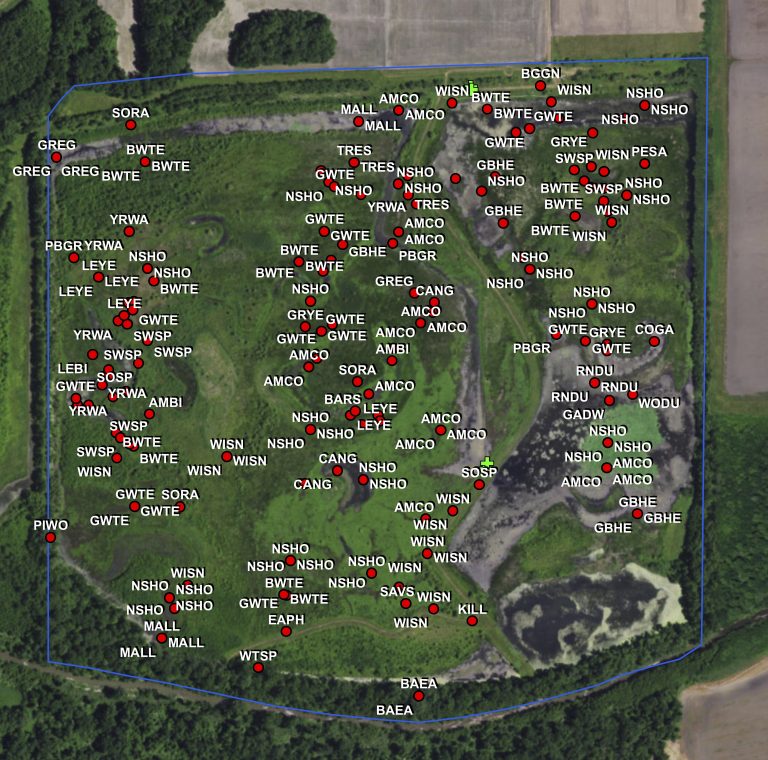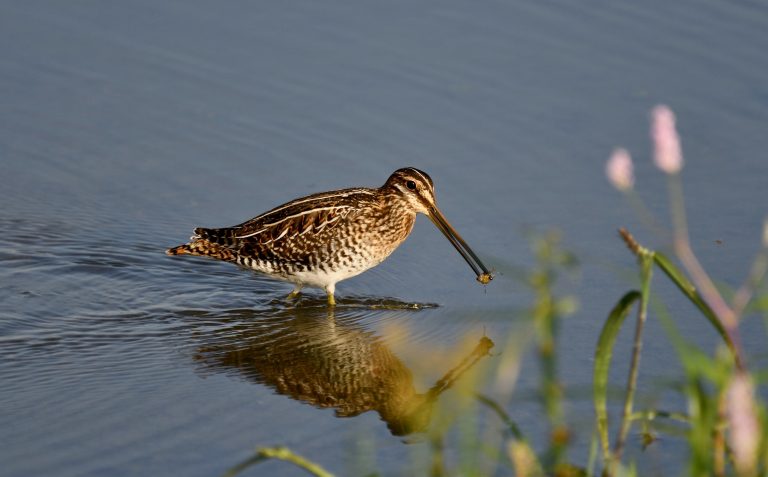
History of Wetland Surveys
 Many wetland bird species, particularly the rails and bitterns, are not adequately surveyed by the North American Breeding Bird Survey. Better data are needed to address the conservation of these birds. Scientists began developing a national standardized marsh bird survey method in 1998 to fill this data gap, and in recent years, several states have begun piloting this protocol. In 2012, Missouri joined the ranks of states implementing pilot marsh bird survey programs. This effort was intended to collect data that can be used at the State, regional, and National levels to track marsh bird populations, assist planning activities, assess habitat needs, focus conservation efforts, and evaluate the effects of conservation programs.
Many wetland bird species, particularly the rails and bitterns, are not adequately surveyed by the North American Breeding Bird Survey. Better data are needed to address the conservation of these birds. Scientists began developing a national standardized marsh bird survey method in 1998 to fill this data gap, and in recent years, several states have begun piloting this protocol. In 2012, Missouri joined the ranks of states implementing pilot marsh bird survey programs. This effort was intended to collect data that can be used at the State, regional, and National levels to track marsh bird populations, assist planning activities, assess habitat needs, focus conservation efforts, and evaluate the effects of conservation programs.
After the 2012-13 pilot seasons, MRBO adopted a new survey methodology in 2014. With a study design focused on private lands, the new methodology involves walking transect lines through marshes and documenting every bird seen and heard on mobile GIS applications. This allows us to not just have counts of birds, but also mapped locations of every individual. We have continued this methodology on 60+ private wetlands each year to 2022, and anticipate recommencing the wetland bird survey project in 2026.
The primary goal of wetland surveys is to provide a more accurate depiction of wetland bird populations in Missouri. An additional goal of this project is to inform landowners the diversity of birds that inhabit quality wetland habitat they are managing.
Wetland birds need our help
 Much remains unknown about the guild of birds known as “secretive marshbirds”, a group that includes the rails and bitterns whom inhabit emergent marshes. In Missouri the abundance, recent population trends, and habitat requirements of several species are poorly documented, and short-term studies fail to determine detailed information about life history needs. The little information we do have suggests that populations are undergoing precipitous declines.
Much remains unknown about the guild of birds known as “secretive marshbirds”, a group that includes the rails and bitterns whom inhabit emergent marshes. In Missouri the abundance, recent population trends, and habitat requirements of several species are poorly documented, and short-term studies fail to determine detailed information about life history needs. The little information we do have suggests that populations are undergoing precipitous declines.
Acquiring data on nonabundant species and translating those results into something meaningful for conservation is a challenge. Marsh birds in Missouri are far more abundant during migration; many wetland managers and landowners concentrate efforts on providing habitat for waterfowl during those times. The limiting factor, however, may actually be breeding habitat.
In light of these dynamics, MRBO is collecting information on all birds within the wetlands we survey to attempt to determine what specific wetland habitat and management corresponds with specific bird occurrence on private lands. Each of the landowners participating in the survey project receives their own customized report, showing all the birds that occurred on their property as documented by MRBO surveyors.